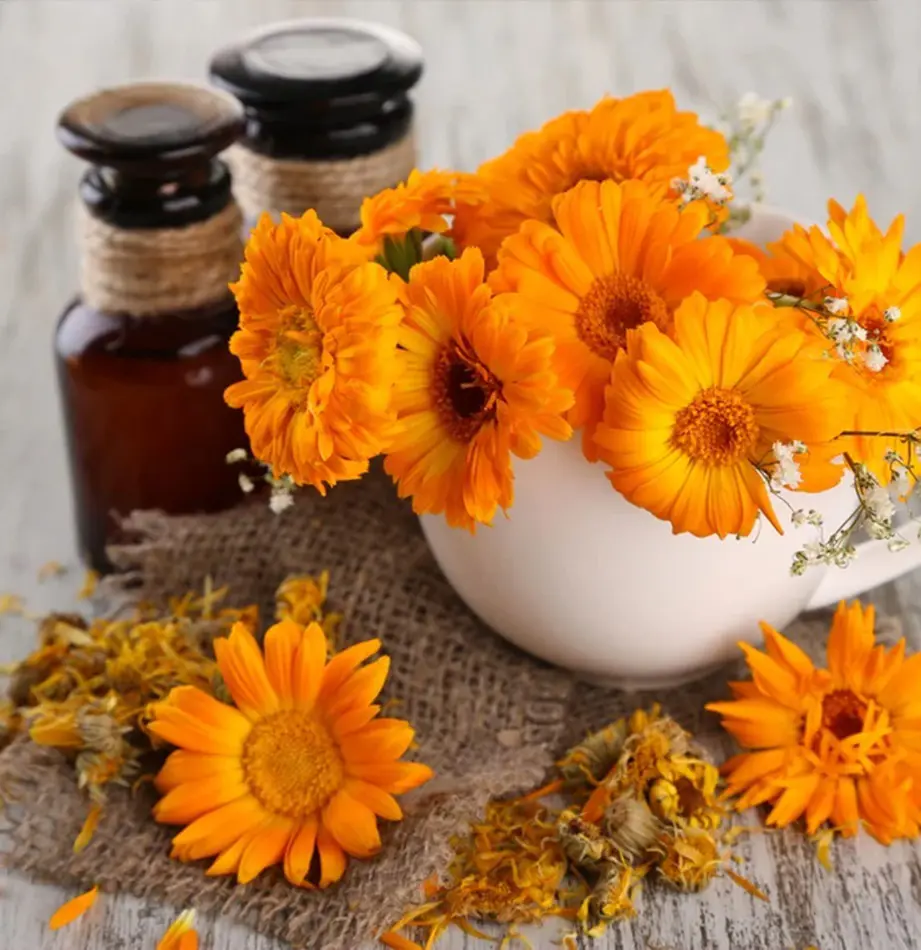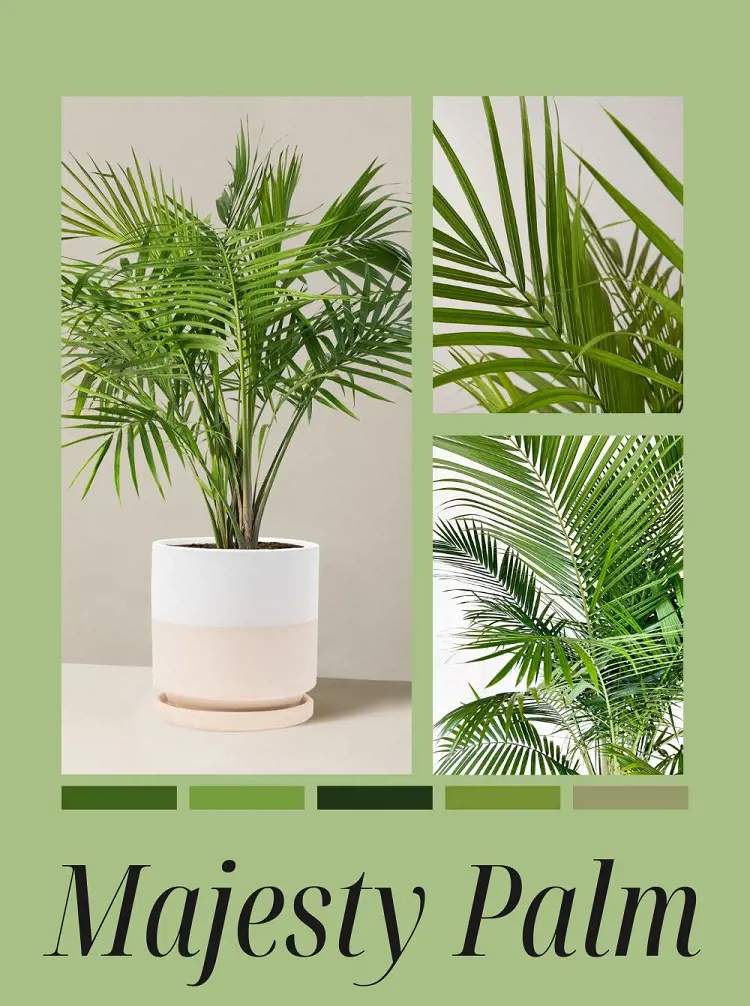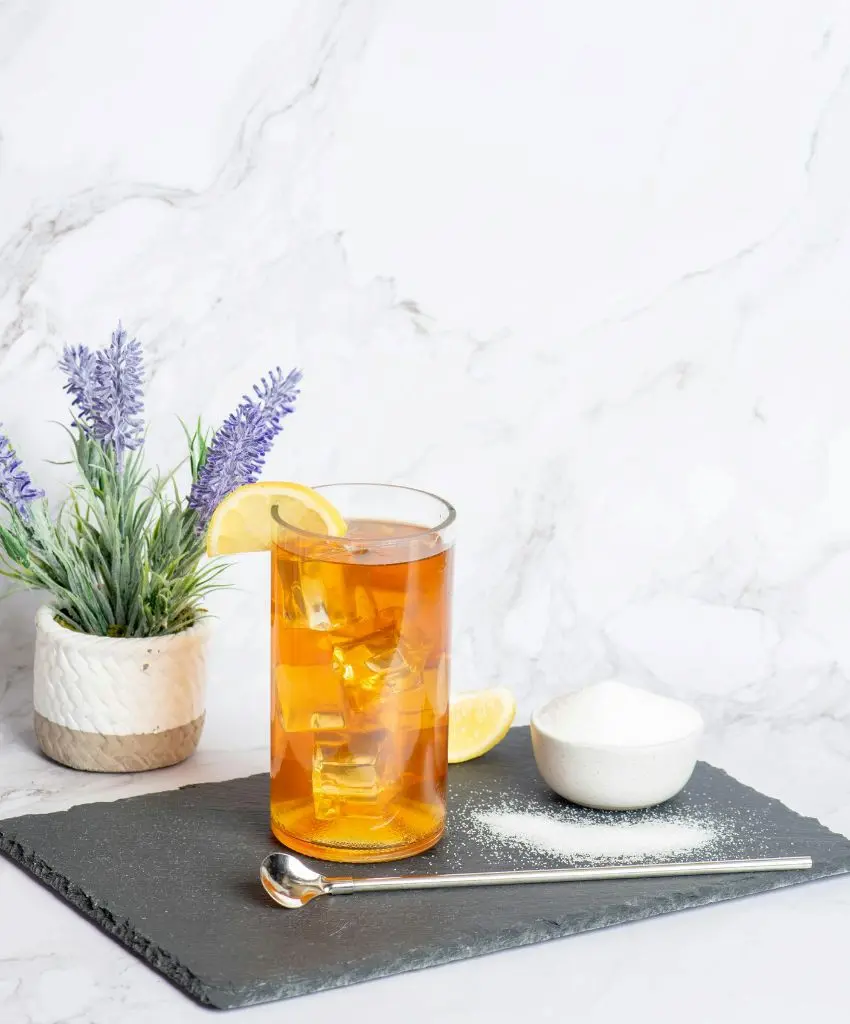How To Grow And Care For Blue Delphinium Plant
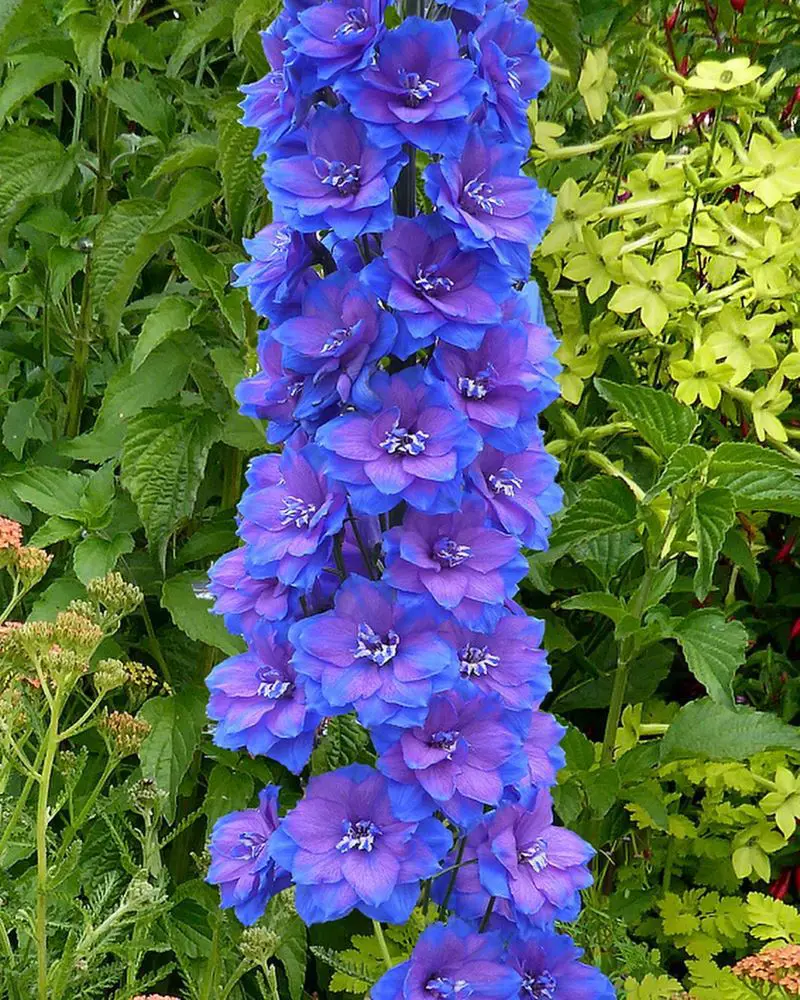
This post may contain affiliate links. If you make a purchase through links on our site, we may earn a commission.
The Blue Delphinium is a perennial plant renowned for its signature blue flowers that resemble the blue sky. Native to the Northern Hemisphere, the flower initially blooms from June to September. These plants may also bloom in late summer or during early fall.
With proper care, a new blue delphinium can start producing flowers within a year. The plant's flower is also extremely resilient; it can remain fresh for six to eight days after being cut off from the plant.
Blue Delphinium Care
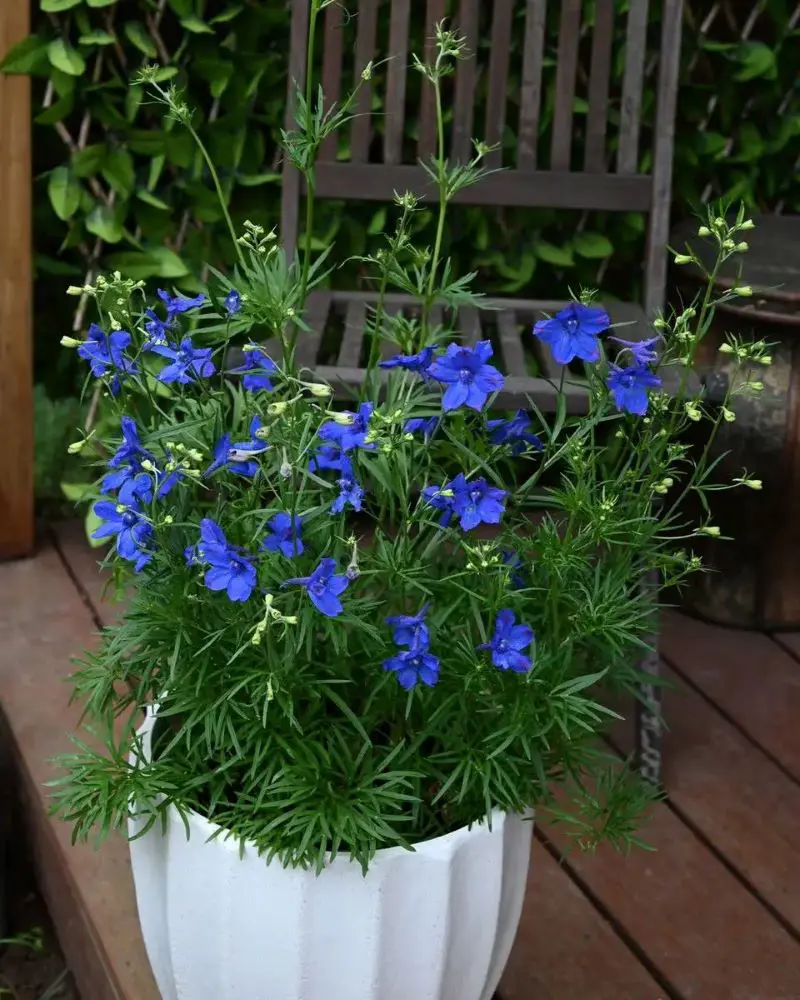
Blue Delphinium should be handled with care. These delicate flowers flourish when handled gently by an expert gardener. Plant owners should also take caution while pruning the plant. Be sure not to cut off healthy parts as it could lead to serious damage to the plant.
Light
These plants require full sun to partially shade for optimal growth. While they prefer at least 6 hours of direct sunlight per day, they can tolerate some shade, particularly in hotter climates.
However, insufficient sunlight may lead to leggy growth and reduced flowering. Planting them in a location with ample sunlight exposure ensures sturdy stems and vibrant blooms, contributing to their overall health and beauty.
Soil
Blue Delphinium plants flourish in well-draining soil with a rich organic content. A loamy soil with good drainage is ideal, preventing waterlogging which can cause root rot.
Adding organic matter such as compost or well-rotted manure can improve soil structure and fertility. Avoid heavy or compacted soils as they can hinder root development and lead to poor plant performance.
Water
These plants have moderate water needs, requiring consistently moist soil. Water them deeply and regularly, especially during dry periods or hot weather, to keep the soil evenly moist but not waterlogged.
Mulching around the base of the plant can help retain soil moisture and regulate temperature. However, overwatering should be avoided to prevent root rot. Regularly monitor soil moisture levels and adjust watering accordingly to maintain optimal conditions for growth.
Support
Tall varieties of the Blue Delphinium plants need sturdy support structures like stakes or trellises to prevent bending or breaking of stems. Without adequate support, the weight of the flower spikes may cause them to lean or collapse, leading to damage or reduced flowering.
Supporting the plants ensures upright growth, promotes better air circulation, and prevents overcrowding. This ultimately enhances the plant's appearance and longevity in the garden.
Fertilization
The perennial plant benefit from a balanced fertilizer applied twice during the growing season. Use a general-purpose, slow-release fertilizer with equal parts nitrogen, phosphorus, and potassium, such as a 10-10-10 formulation.
Pruning
Pruning Blue Delphinium plants is essential for maintaining their health and appearance. Deadheading spent blooms should be done regularly throughout the growing season to encourage continuous flowering.
Neglecting pruning for a prolonged period can lead to the accumulation of dead material, reduced airflow, and increased risk of disease. It may also result in overcrowding, weakening of stems, and diminished flower production. Meanwhile, regular pruning ensures a tidy appearance, prevents disease, and promotes vigorous growth.
How To Grow Blue Delphinium Plants

Growing a Blue Delphinium plant can be moderately challenging due to specific care requirements. However, if specific instruction are followed, it doesn't take an expert to grow these exotic plants. Check out this guide for growing a healthy and beautiful Blue Delphinium.
When To Plant
Blue Delphiniums should be planted in early spring or late summer, depending on the climate. In cooler regions, early spring planting allows the plants to establish before the heat of summer.
In warmer climates, late summer planting takes advantage of milder temperatures, giving the plants time to settle in before winter. Planting during these seasons provides favorable conditions for root development and overall plant establishment.
Where To Plant
The perfect location to plant these flowers is in a spot with full sun to partial shade, offering at least 6 hours of sunlight daily. Choose a well-draining soil with good organic content to prevent waterlogging.
Additionally, ensure the planting area has protection from strong winds, as tall varieties may require support to prevent stem breakage. These conditions promote healthy growth and lively blooms.
Depth and Spacing
When planting Blue Delphiniums, dig a hole that is slightly deeper and wider than the plant's root ball. The hole should be typically around 6 to 8 inches deep. Ensure the crown of the plant sits just above the soil level to prevent rotting.
Moreover, space multiple blue Delphiniums approximately 18 to 24 inches apart to allow for proper air circulation and prevent overcrowding. This spacing encourages healthy growth and reduces the risk of disease.
Growing Blue Delphinium From Seeds
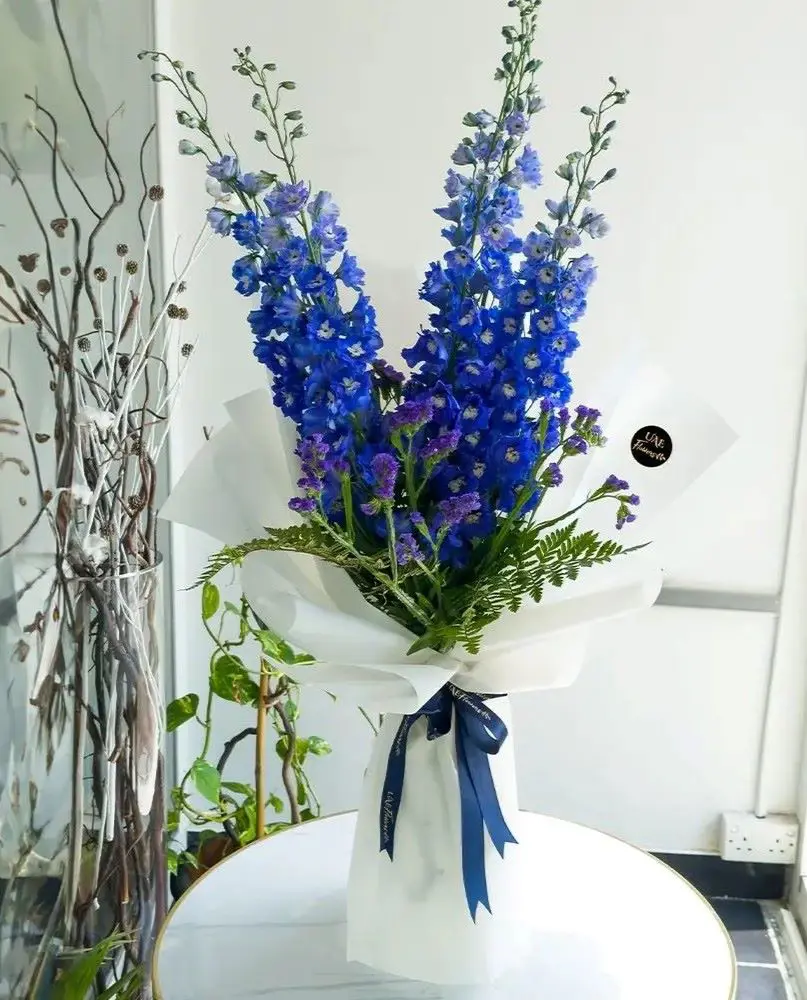
Growing Blue Delphiniums from seed is a common practice among gardeners who enjoy starting plants from scratch. While it requires patience and careful attention to seed germination requirements, it allows for a wide selection of cultivars and colors.
While some gardeners may opt for purchasing established plants from nurseries, growing from seed offers a rewarding experience of nurturing a plant from its earliest stages.
How To Grow
- Prepare Seed Trays: Fill seed trays or pots with well-draining potting mix, leaving a 1/4 inch gap at the top.
- Sow Seeds: Sprinkle the Blue Delphinium seeds evenly over the soil surface, spacing them about 1 inch apart. Lightly press the seeds into the soil, ensuring good seed-to-soil contact.
- Cover Seeds: Sprinkle a thin layer of potting mix or vermiculite over the seeds to cover them lightly. Do not bury the seeds too deeply, as they require light to germinate.
- Watering: Gently water the soil surface using a fine mist or spray bottle until evenly moist, but not waterlogged.
- Provide Warmth: Place the seed trays in a warm location with indirect sunlight or provide bottom heat using a seedling heat mat to encourage germination.
- Maintain Moisture: Keep the soil consistently moist but not waterlogged throughout the germination process. Check regularly and water as needed.
- Germination: These seeds typically germinate in 14-21 days. Once seedlings emerge and develop true leaves, continue to provide adequate sunlight and water.
- Transplanting: When seedlings have grown large enough to handle, transplant them into individual pots filled with potting mix. Allow them to continue growing indoors until they are ready for outdoor planting.
How To Harvest Blue Delphiniums
Harvesting these plants primarily involves collecting the flowers for decorative purposes or seed production. To harvest flowers, wait until the blooms have fully developed but before they begin to fade.
Using sharp and clean scissors or pruning shears, cut the flower stalks at the base. Don't forget to leave some foliage on the plant for continued growth. Harvesting in the early morning or late afternoon when the plants are well-hydrated can help prolong the vase life of the flowers. Remove any damaged or diseased blooms during harvesting to encourage healthy regrowth.
Blue Delphinium Types
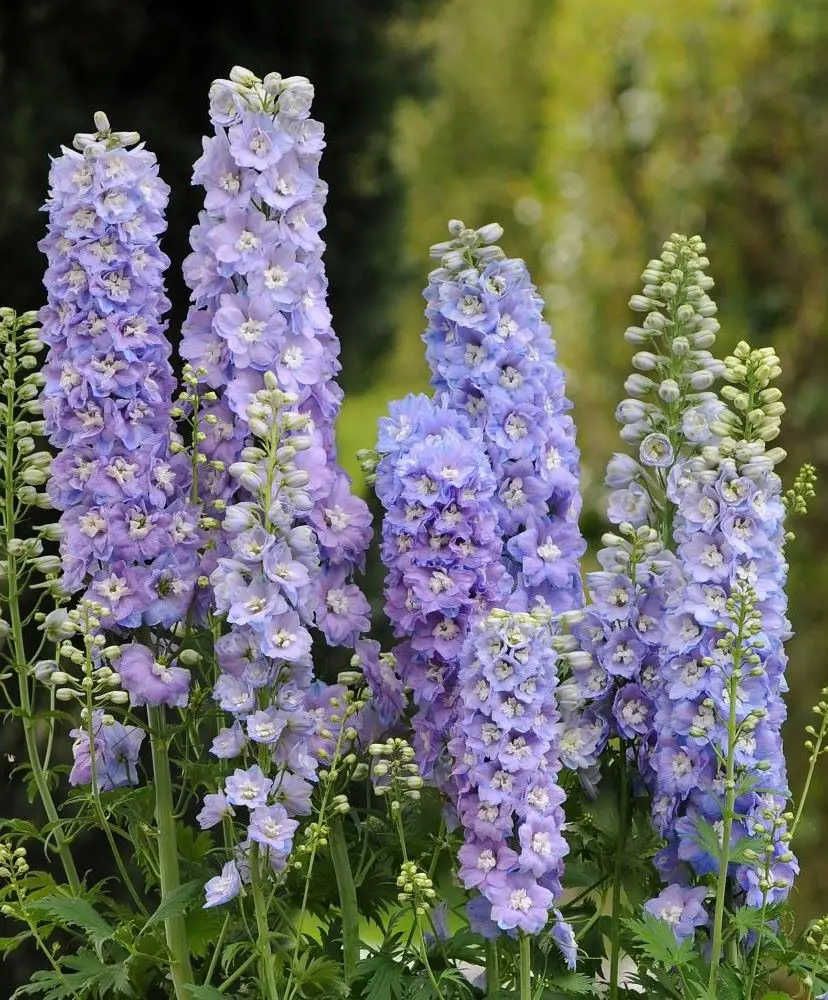
Blue Delphinium can be categorized into over 25 types, including the New millennium delphiniums and Pacific giant delphiniums. While varieties like the Delphinium elatum is quite common, the Million Dollar Blue is the rarest type.
1. Delphinium elatum
Commonly known as the English Delphinium or Pacific Giant Delphinium, the Delphinium elatum is a striking perennial prized for its majestic height and stunning flower spikes. Growing up to 6 feet tall, it boasts densely packed spikes adorned with large, showy blooms in shades of blue, purple, pink, and white.
2. Delphinium grandiflorum
Also called the Chinese Delphinium or Siberian Larkspur, the Delphinium grandiflorum offers a delightful addition to garden landscapes. With its compact stature and charming flowers, it presents an enchanting display of color.
3. Delphinium belladonna
This variety is characterized by its compact habit and delicate beauty. Growing to a modest height, typically around 1 to 2 feet tall, it produces graceful, nodding flowers in shades of blue and purple.
4. Delphinium 'Magic Fountain'
Delphinium 'Magic Fountain' is a captivating hybrid variety prized for its compact size and abundant flowering. Growing to about 2 to 3 feet tall, it produces dense spikes of semi-double flowers in a kaleidoscope of colors.
5. Delphinium 'New Millennium'
Delphinium 'New Millennium' is a modern hybrid series renowned for its robust growth and stunning floral display. Towering up to 6 feet tall, it boasts sturdy stems adorned with large, showy flowers.
Common Pests And Diseases
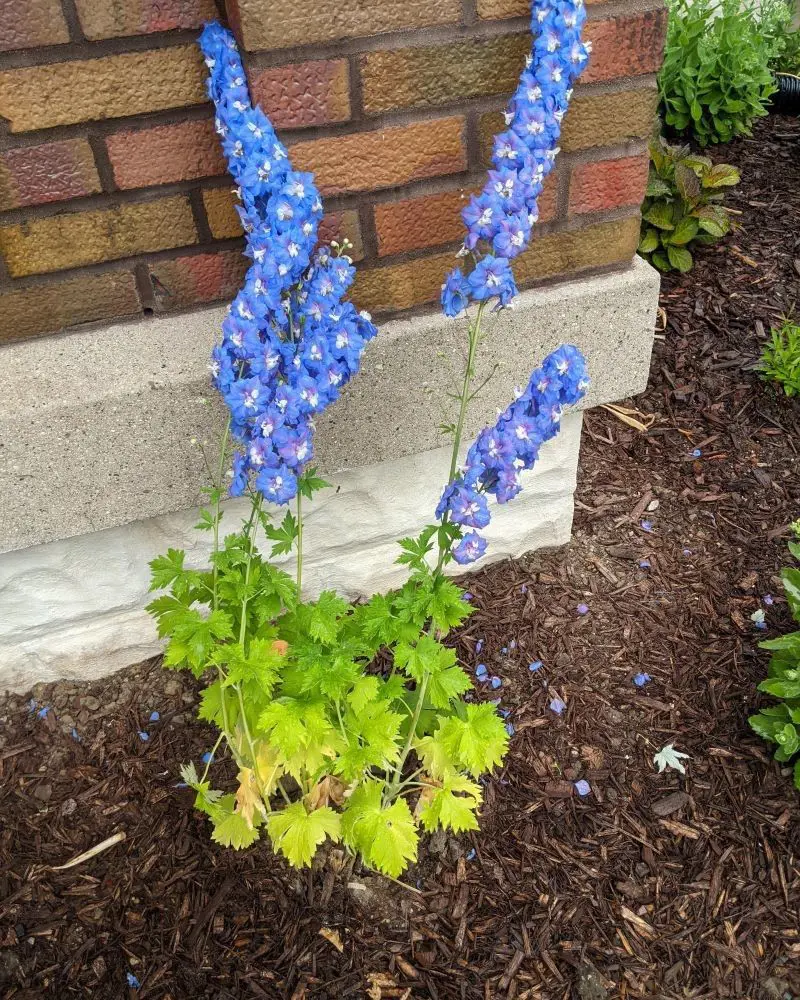
Like many other plants, Blue delphiniums can be susceptible to various pests and diseases. Here are some common ones to watch out for:
Aphids
Aphids attack blue delphiniums by feeding on the sap of tender shoots, buds, and undersides of leaves. Their piercing mouthparts penetrate plant tissue, causing wilting, distortion, and yellowing. They reproduce rapidly, forming dense colonies.
Slugs and Snails
Slugs and snails chew on blue delphinium leaves and stems, leading to defoliation and weakened plants. Their feeding activity often results in a ragged appearance and can hinder the plant's ability to photosynthesize and thrive.
Thrips
Thrips are tiny, slender insects that feed on the sap of blue delphinium plants by piercing plant tissue with their mouthparts. Their feeding causes distorted growth, silvering of leaves, and sometimes the development of necrotic spots.
Crown Rot
Crown rot is typically caused by fungal pathogens in the soil. It manifests as a decay of the plant's crown, leading to wilting, yellowing, and eventual death. Excessive moisture, poor drainage, and wounds to the plant's base increase susceptibility to this disease.
Verticillium Wilt
Verticillium wilt is caused by the soil-borne fungus Verticillium dahliae. It spreads through contaminated soil or plant debris, entering the plant through its roots and blocking the vascular system. Symptoms include wilting, yellowing, and death of foliage.
Recent posts
Plant Care
Plant Care
10 Calendula Health Benefits and Possible Side Effects
[image-1] Commonly used in medicinal preparations in several medicine systems, calendula is an annual herb in the daisy family (Asteraceae) originating from southern Europe and the Eastern Mediterranean area. It is suitable for borders, beds cut flow...
Plant Care
How To Plant, Grow and Care Majesty Palm
The majestic palm, scientifically known as Ravenea rivularis, makes for a stunning indoor tree with its lush and grand fronds. Originating from Madagascar's river banks, this resilient houseplant is cherished not only for its beauty but also for its ...
